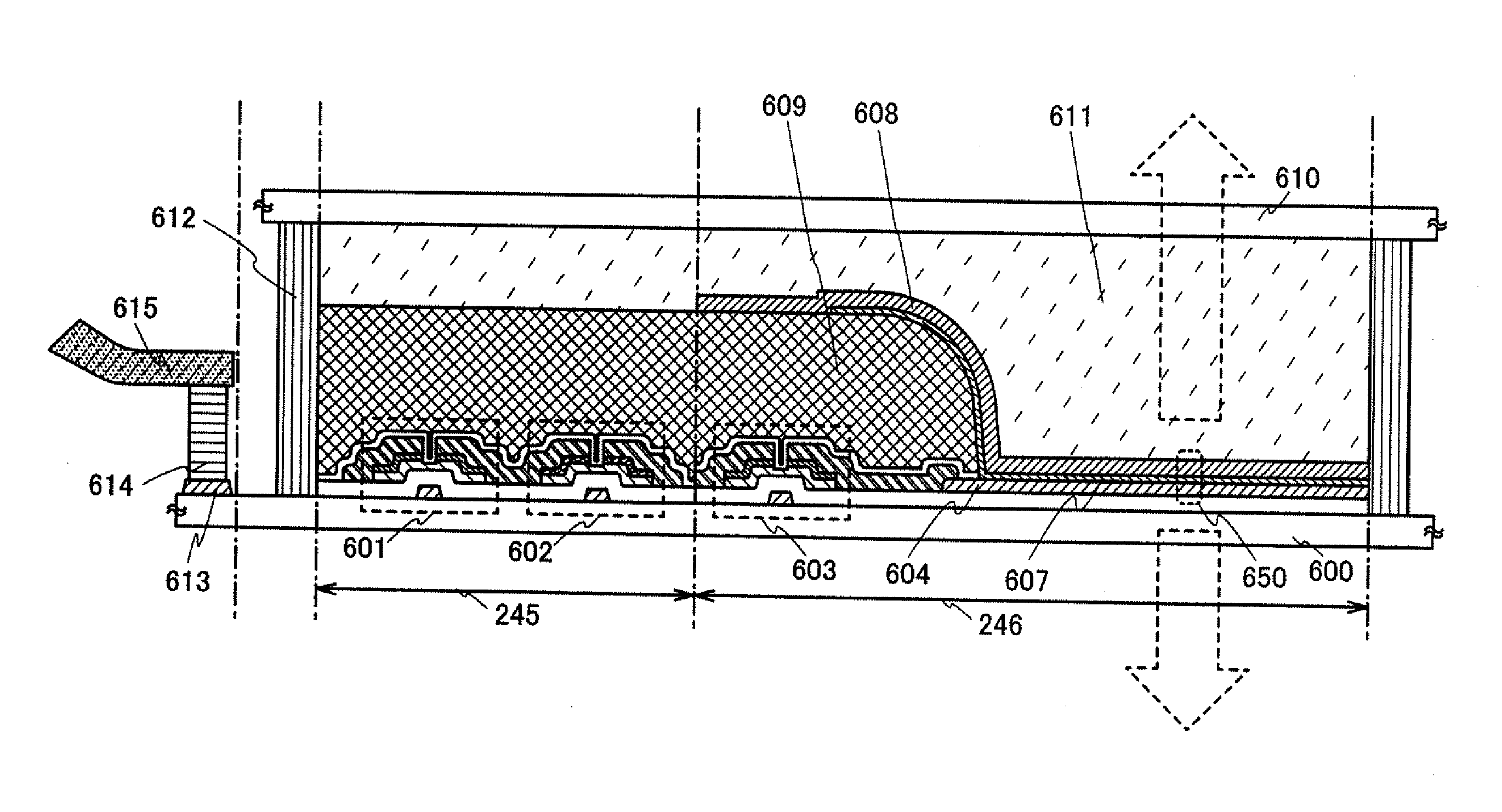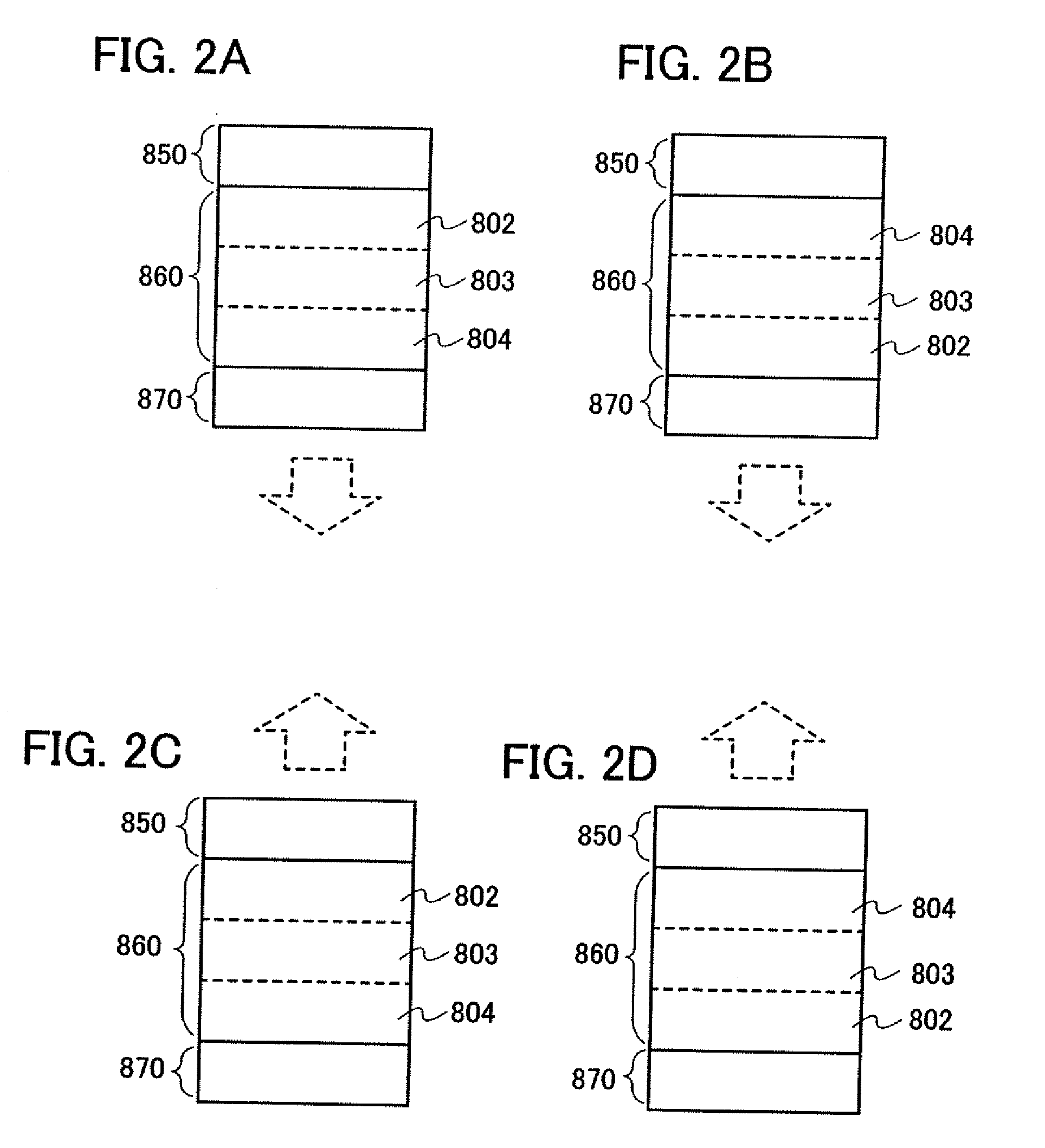Light-emitting element and light-emitting device
a technology of light-emitting devices and light-emitting elements, which is applied in the direction of discharge tubes/lamp details, discharge tubes luminescnet screens, electric discharge lamps, etc., can solve the problems of high driving voltage, achieve low power consumption, improve the electric-transporting property of functional layers, and reduce power consumption
- Summary
- Abstract
- Description
- Claims
- Application Information
AI Technical Summary
Benefits of technology
Problems solved by technology
Method used
Image
Examples
embodiment mode 1
[0052]A light-emitting element in this embodiment mode will be explained in detail with reference to FIGS. 1A to 1D and FIGS. 2A to 2D.
[0053]The light-emitting element of the present invention includes an EL layer that has a stacked structure including a light-emitting layer containing an organic compound and a functional layer having a separate function between a pair of electrode layers. According to an aspect of the present invention, a mixed-valence compound is contained in a functional layer in a light-emitting element that includes an EL layer in which a light-emitting layer containing an organic compound and the functional layer are stacked.
[0054]A light emission mechanism is said to be as follows: by applying voltage to a pair of electrodes with an EL layer interposed therebetween, electrons injected from a cathode and holes injected from an anode (hereinafter, electrons or holes are also referred to as carriers) are recombined with each other in an emission center of a ligh...
embodiment mode 2
[0113]In this embodiment mode, a mode of a light-emitting element in which a plurality of light-emitting units according to the present invention are stacked (this light-emitting element is also referred to as a stacked-type element) will be explained with reference to FIG. 20. This light-emitting element is a light-emitting element including a plurality of light-emitting units between a first electrode layer and a second electrode layer.
[0114]In FIG. 20, a first light-emitting unit 511 and a second light-emitting unit 512 are stacked between a first electrode layer 501 and a second electrode layer 502. The first electrode layer 501 and the second electrode layer 502 can be similar to the electrode layers shown in Embodiment Mode 1. The first light-emitting unit 511 and the second light-emitting unit 512 may have either the same structure or a different structure, which may be similar to those shown in Embodiment Mode 1. Accordingly, a structure may be employed in which a mixed-vale...
embodiment mode 3
[0120]This embodiment mode will explain a structural example of a light-emitting device including the light-emitting element of the present invention with reference to drawings. More specifically, the case where a structure of a display device is a passive matrix type will be described.
[0121]The light-emitting device includes first electrode layers 751a, 751b, and 751c extending in a first direction; an EL layer 752 provided to cover the first electrode layers 751a, 751b, and 751c; and second electrode layers 753a, 753b, and 753c extending in a second direction perpendicular to the first direction (see FIG. 4A). The EL layer 752 has a stacked structure including a light-emitting layer containing an organic compound and a functional layer containing a mixed-valence compound. The EL layer 752 is provided between the first electrode layers 751a, 751b, and 751c and the second electrode layers 753a, 753b, and 753c. In addition, an insulating layer 754 functioning as a protective film is ...
PUM
 Login to View More
Login to View More Abstract
Description
Claims
Application Information
 Login to View More
Login to View More - R&D
- Intellectual Property
- Life Sciences
- Materials
- Tech Scout
- Unparalleled Data Quality
- Higher Quality Content
- 60% Fewer Hallucinations
Browse by: Latest US Patents, China's latest patents, Technical Efficacy Thesaurus, Application Domain, Technology Topic, Popular Technical Reports.
© 2025 PatSnap. All rights reserved.Legal|Privacy policy|Modern Slavery Act Transparency Statement|Sitemap|About US| Contact US: help@patsnap.com



